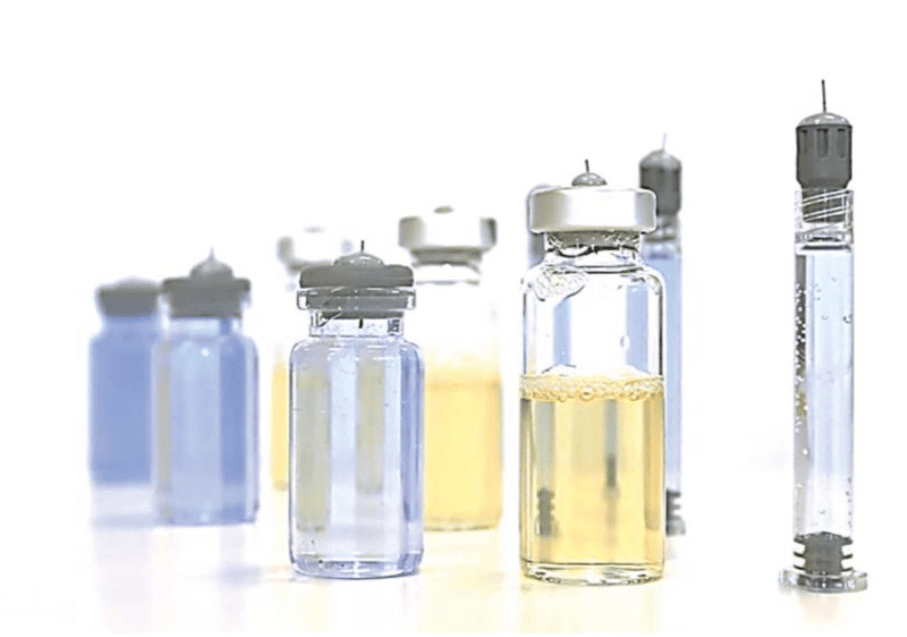This EN ISO 8871 standard describes the test specifications for elastomer parts for parenteral products and devices for pharmaceutical use.
The parenteral route is a way of administering medication or nutrition by a route other than the digestive tract. It therefore includes subcutaneous, intradermal, intravenous and intramuscular injections.
This standard is used in particular to determine the tightness of injectable syringes.
We will focus on Chapter 5 and Annex D of this standard, which concerns dye penetration testing.

Principle of the test :
The ISO 8871-5 Annex D test uses a dye bath. The test principle is fairly simple. The sample is immersed in a dye bath, and a vacuum is created in the hermetic enclosure, causing an increase in the volume of the residual air contained in the packaging being tested.
Under the effect of the vacuum, a tiny fraction of the liquid or air present in the packaging leaves it.
When atmospheric pressure is re-established, there is a suction effect which causes the colourant to penetrate the packaging. As the packaging often contains liquid, the liquid becomes coloured, making it easier to detect the leak.
If visual detection is not easy, a spectrophotometer can be used.
Equipment required :
To carry out the ISO 8871-5 Annex D test, you will need the following:
- Packaging samples: select representative samples of the packaging you wish to test. Make sure they are filled according to the conditions specified in the standard.
- Test chamber: a sealed chamber with openings for the pipes and fittings needed to apply the differential pressure.
- Vacuum device: a device capable of creating a vacuum in the test chamber.
- Methylene blue dye in a concentration high enough to colour samples correctly. The standard is 1g/L.
Test steps :
Here are the general steps for carrying out the ISO 8871-5 Annex D test
- Prepare your 1g/L dye bath.
- Prepare your samples, identifying them clearly with labels.
- Immerse your samples in the dye bath.
- Place the bath in the vacuum chamber. Or use the chamber as a container for the mixture and the dye.
- Run the test programme to lower the pressure to -270 mbar for 10 min.
- Once back at atmospheric pressure, leave the dye to penetrate for 30 minutes.
- Rinse your samples thoroughly and check for the presence of dye in the packaging.
The complete cycle takes almost 45 minutes, which may seem a long time for a leak test. As it happens, the standard requires this test time to be sure of detecting more than 85% of 250 µm leaks.
Other test methods
- ASTM D3078 – Immersion tests on flexible packaging
- ASTM D4991 – Tests on empty rigid packaging.
- ASTM D5094 – Tests on filled rigid packaging.
- ASTM D6653 – Altitude simulation on packaging
- ASTM F2096 – Internal pressurisation tests for packaging
- ISO 8871-5 annexe D – Dye penetration tests on medical packaging
- DIN EN 1779 – Non-destructive testing of flexible packaging





